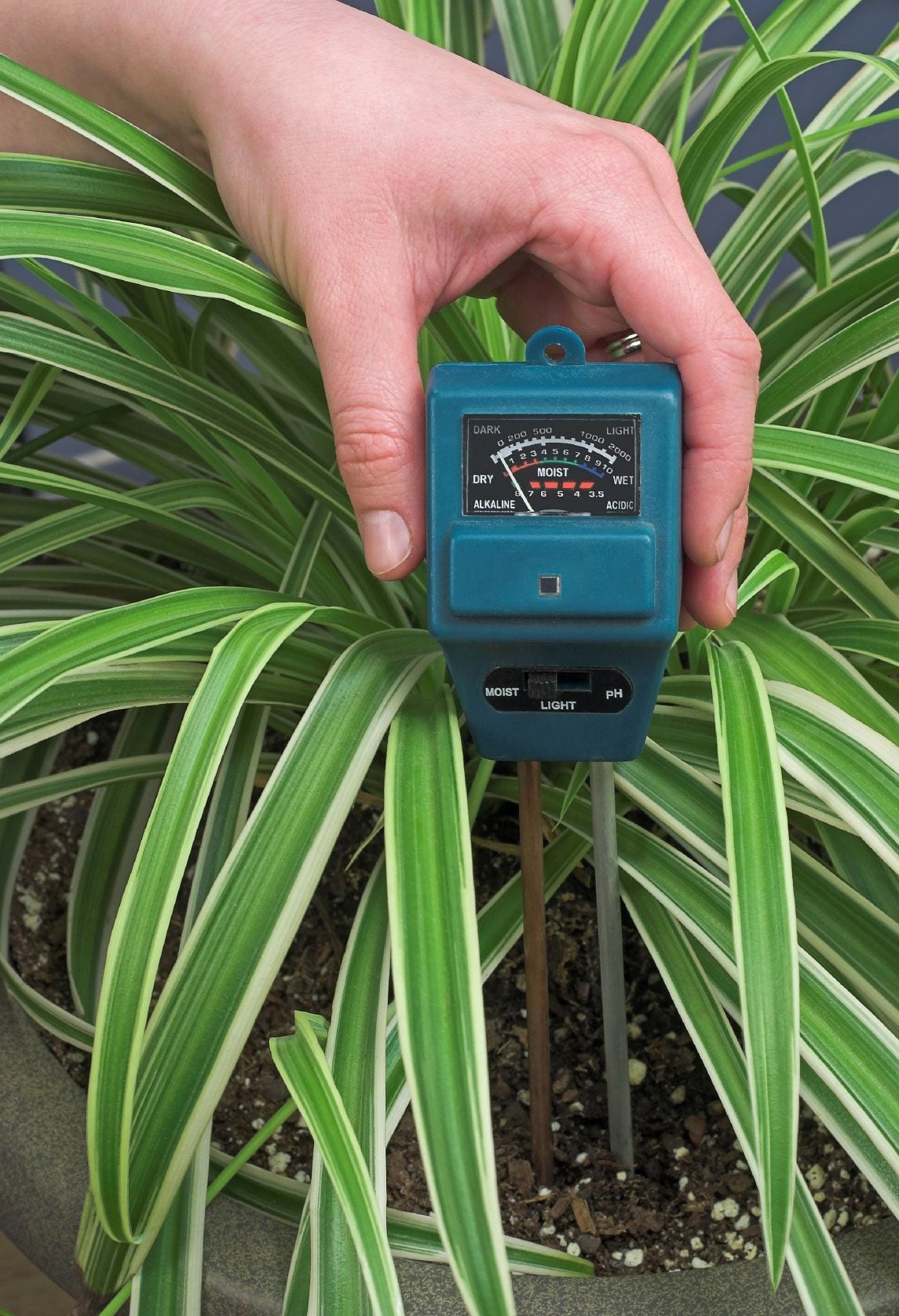Testing Moisture In Plants: How To Gauge Soil Moisture In Plants
Learn how to gauge soil moisture for healthier plants, indoors and out.


Soil Moisture Monitoring - Tips On Checking Plant Moisture In Pots And Gardens
Adequate moisture is critical for growing plants successfully. For most plants, too much water is more dangerous than not enough. The key is to learn how to gauge soil moisture effectively and to water plants only when they need it, not on a set schedule.
Checking Plant Moisture
When it comes to testing moisture in plants, the feel of the soil is the best guide.
As a general rule, a potted plant in a container measuring 6 inches (15 cm.) in diameter needs water when the top 2 inches (5 cm.) of soil feels dry to the touch. A larger container measuring 8 to 10 inches (20-25 cm.) in diameter is ready for water when the top ½ to 1 inch (1.25-2.5 cm.) of soil feels dry.
Insert a trowel into the soil, then tilt the trowel to check the moisture of garden plants. You can also insert a wooden dowel into the soil to determine the depth of soil moisture. If the dowel comes out clean, the soil is dry. Damp soil will cling to the dowel.
In most cases, the soil should be damp to the root zone, 6 to 12 inches (15-30 cm.). However, sandy soil drains quickly and should be watered when the soil is dry to a depth of 2 to 4 inches (5-10 cm.).
Remember that the need for water also varies widely depending on the plant. For example, most succulents require dry soil and infrequent watering while some plants, such as columbine, prefer consistently moist soil. However, nearly all plants require air circulation around the roots and are prone to rot in poorly drained, waterlogged soil.
Soil Moisture Tools
Soil moisture monitoring can also be achieved with specific tools. A variety of simple, inexpensive soil moisture meters are available in garden centers and nurseries, and many are suitable for both indoor and outdoor growing. The meters, which tell you if the soil is wet, moist, or dry at the root level, are especially effective for large potted plants.
Sign up for the Gardening Know How newsletter today and receive a free copy of our e-book "How to Grow Delicious Tomatoes".
Other soil moisture monitoring tools, often used for agricultural applications, include tensiometers and electrical resistance blocks, which indicate the moisture tension of the soil. Although both are accurate and easy to operate, they are more expensive than simple probes.
Time Domain Reflectometry (TDR) is a newer, more expensive method that measures soil moisture quickly and accurately. However, the sensor often requires recalibration and the data tends to be relatively difficult to interpret.

A Credentialed Garden Writer, Mary H. Dyer was with Gardening Know How in the very beginning, publishing articles as early as 2007.